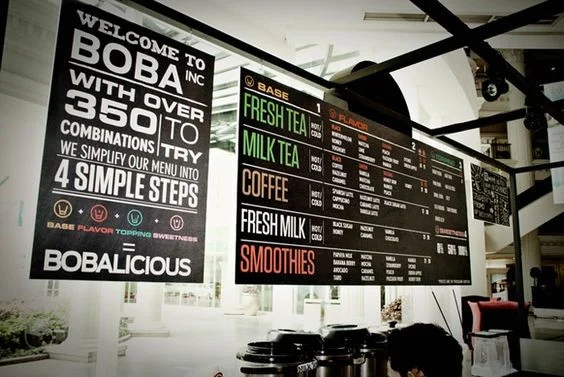]In the realm of culinary adventures, the menu is the gateway to tantalizing taste buds and igniting gastronomic journeys. Restaurants constantly seek innovative ways to engage patrons and streamline their ordering processes. Among the many tools in their arsenal, hanging menu boards have emerged as a versatile and effective solution. These sleek displays not only elevate the ambiance of dining spaces but also offer practical benefits for both customers and restaurateurs. This article delves into the evolution, advantages, and best practices surrounding the utilization of hanging menu boards in restaurants.
Evolution of Menu Presentation:
The concept of presenting menus in a visual and accessible manner has undergone a significant evolution over time. Traditionally, menus were printed on paper or displayed on static boards within the premises. However, as technology advanced and consumer preferences evolved, restaurateurs began exploring more dynamic and interactive menu solutions. This led to the introduction of digital menu boards, which revolutionized the way restaurants presented their offerings. Yet, within this digital landscape, hanging menu boards emerged as a unique blend of aesthetics and functionality.
Design and Aesthetics:
One of the primary advantages of hanging restaurant menu boards is their ability to enhance the ambiance and visual appeal of restaurant spaces. Unlike traditional menu displays that can appear cluttered or outdated, hanging boards offer a sleek and modern aesthetic. They can be customized to reflect the restaurant’s branding, theme, and ambiance, contributing to a cohesive and immersive dining experience. Whether crafted from wood, metal, or acrylic, these boards add a touch of sophistication to any establishment, making them particularly popular among upscale dining venues.
Furthermore, hanging menu boards provide flexibility in design and layout. Restaurants can choose from a variety of shapes, sizes, and configurations to suit their specific needs and spatial constraints. Whether suspended from the ceiling, mounted on walls, or integrated into existing structures, these boards can be seamlessly incorporated into the restaurant’s interior design scheme.
Enhanced Visibility and Engagement:
In addition to their aesthetic appeal, hanging menu boards offer practical benefits in terms of visibility and engagement. By positioning menus at eye level, they ensure that patrons can easily peruse the offerings without straining their necks or squinting at small print. This not only enhances the overall dining experience but also encourages customers to explore the menu more thoroughly, potentially leading to increased sales and upselling opportunities.
Moreover, hanging menu boards facilitate dynamic content updates, allowing restaurants to adapt their offerings in real-time. Whether introducing seasonal specials, promoting limited-time offers, or adjusting prices, restaurateurs can easily modify the content displayed on these boards without the hassle of reprinting or manual updates. This agility enables restaurants to respond swiftly to changing market trends and customer preferences, fostering a sense of excitement and anticipation among patrons.
Streamlined Ordering Process:
Another key advantage of hanging menu boards is their role in streamlining the ordering process. By presenting menus in a clear and organized manner, they help alleviate confusion and reduce wait times for both customers and staff. With visually appealing layouts and intuitive navigation, these boards empower patrons to make informed decisions quickly, minimizing delays in the ordering process.
Furthermore, hanging menu boards can be integrated with digital technology, such as touch screens or QR code scanning, to provide additional functionality. This allows customers to access detailed descriptions, nutritional information, and allergen warnings with a simple tap or scan, enhancing transparency and catering to diverse dietary preferences.
Best Practices for Implementing Hanging Menu Boards:
While hanging menu boards offer numerous benefits, their effectiveness relies on thoughtful design and strategic placement. Here are some best practices for implementing these boards in restaurant settings:
- Consider the layout and flow of the dining space to determine the optimal placement of hanging menu boards. Position them in high-traffic areas where they are easily visible to customers without obstructing foot traffic or creating congestion.
- Prioritize readability by choosing clear fonts, contrasting colors, and appropriate font sizes for menu items. Avoid overcrowding the boards with excessive text or images, as this can overwhelm customers and detract from the overall dining experience.
- Leverage digital technology to enhance the interactive capabilities of hanging menu boards. Incorporate features such as scrolling animations, interactive buttons, and multimedia content to captivate customers’ attention and encourage exploration.
- Regularly update menu content to reflect seasonal offerings, promotions, and changes in pricing. Ensure that updates are made promptly to avoid confusion or discrepancies between the displayed menu and the actual offerings.
- Monitor customer feedback and analytics to gauge the effectiveness of hanging menu boards and identify areas for improvement. Solicit input from patrons regarding their experience with the boards and use this feedback to refine design elements and content strategies.
Conclusion:
Hanging menu boards represent a modern and versatile solution for restaurants seeking to enhance the dining experience for their patrons. Combining aesthetic appeal with practical functionality, these boards offer numerous advantages, including enhanced visibility, streamlined ordering processes, and dynamic content updates. By adopting best practices in design, placement, and content management, restaurateurs can leverage hanging menu boards to create immersive and engaging dining environments that leave a lasting impression on customers. As the culinary landscape continues to evolve, hanging menu boards are poised to remain a valuable asset for restaurants looking to stand out in a competitive market.



